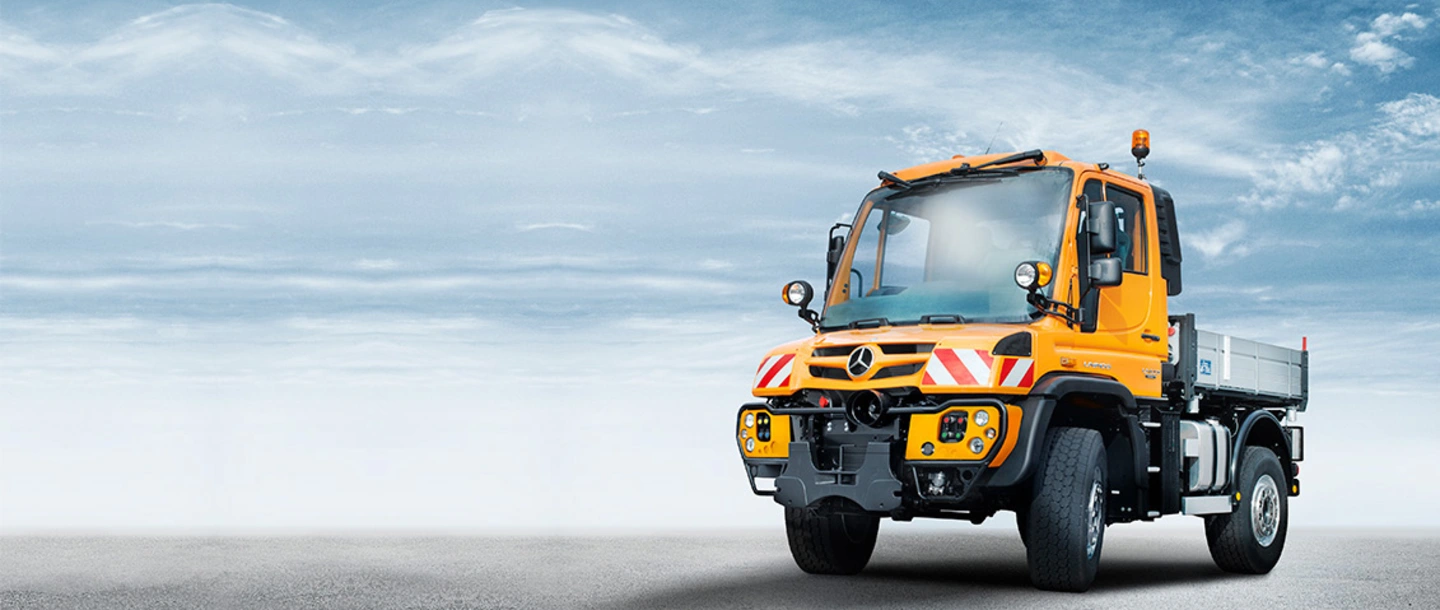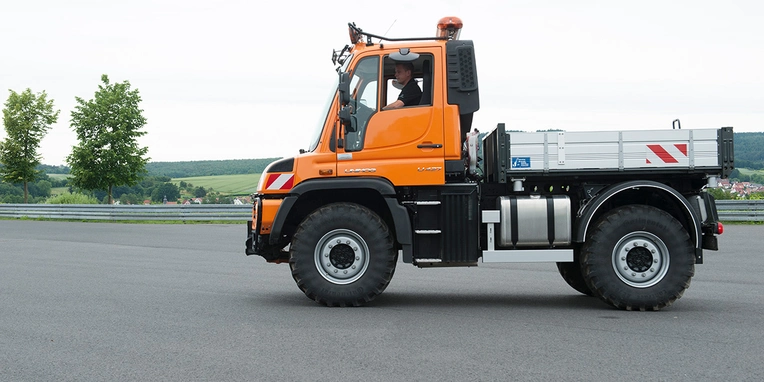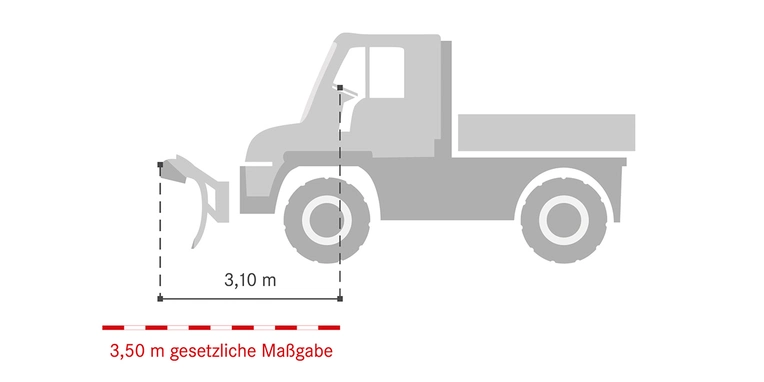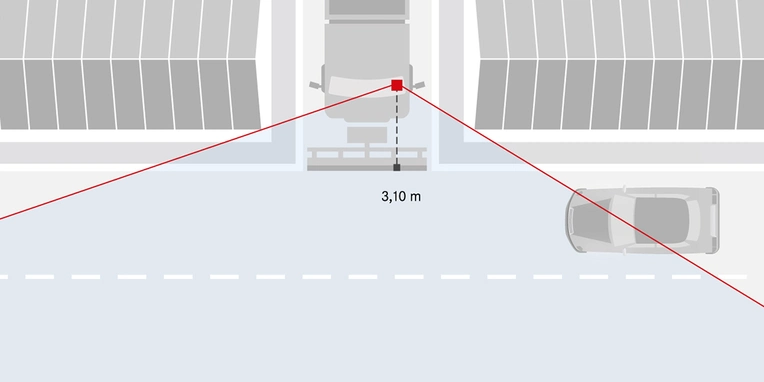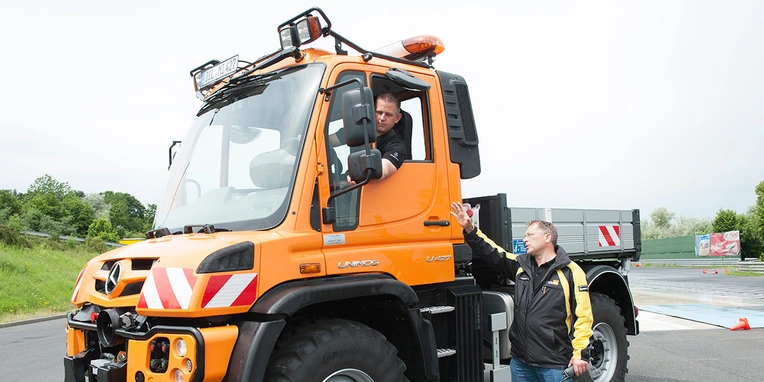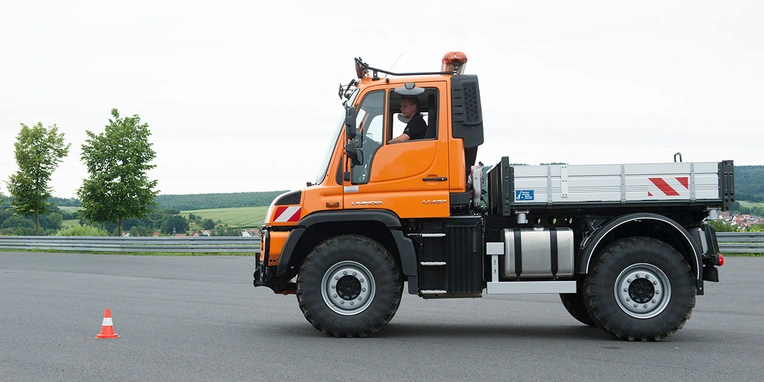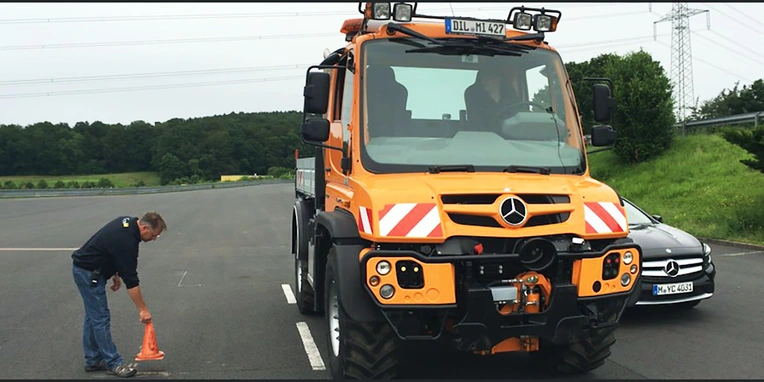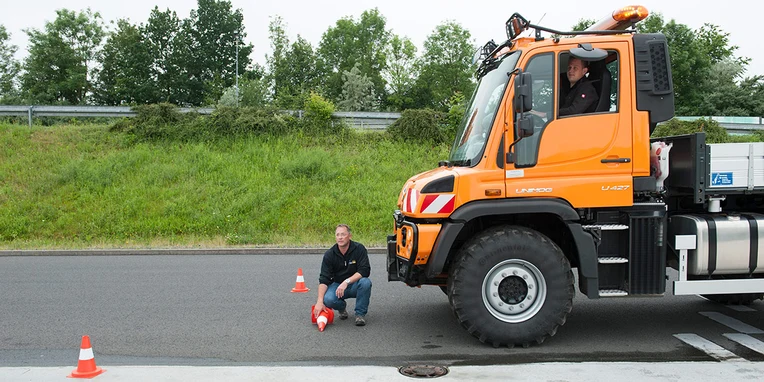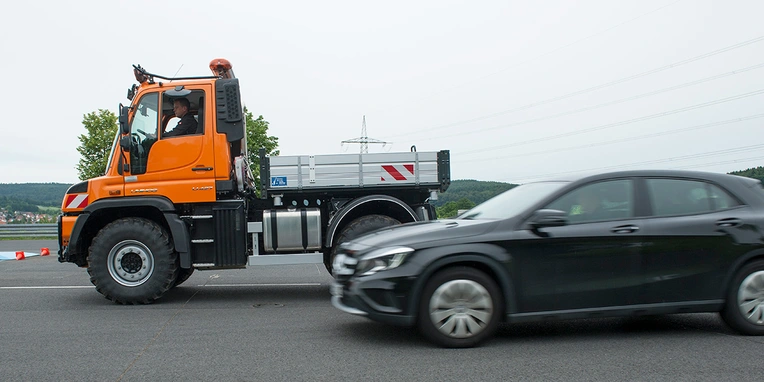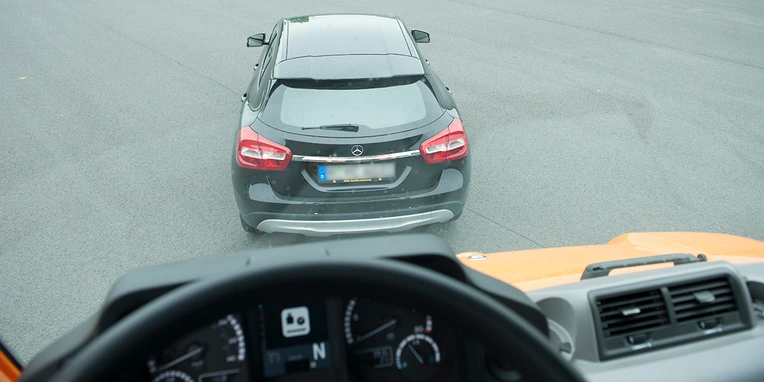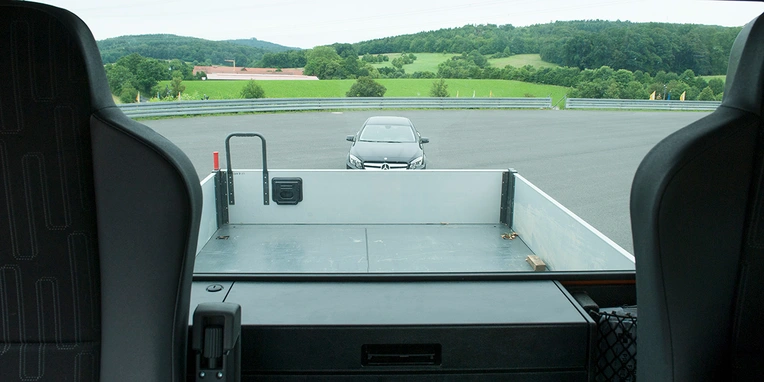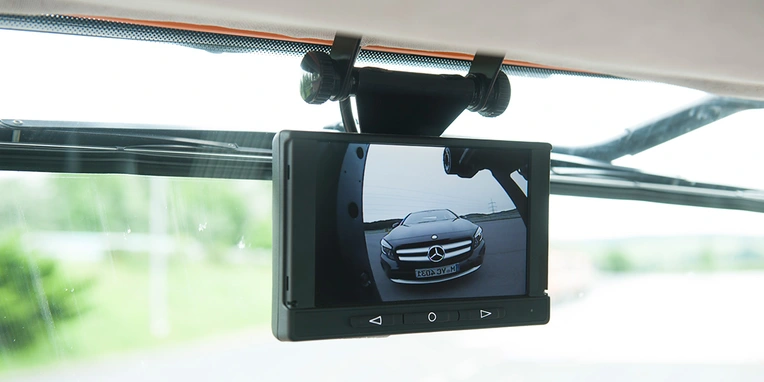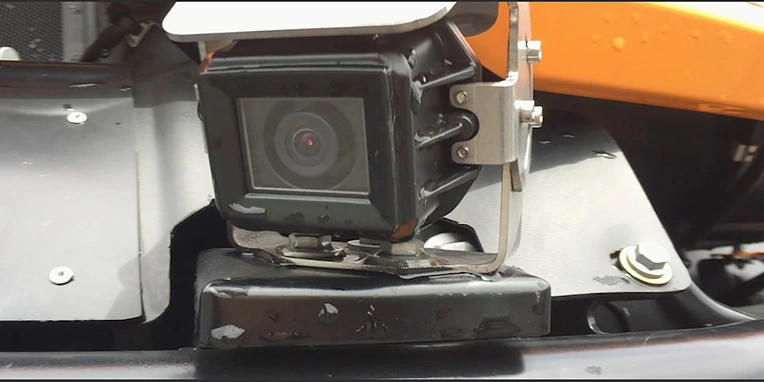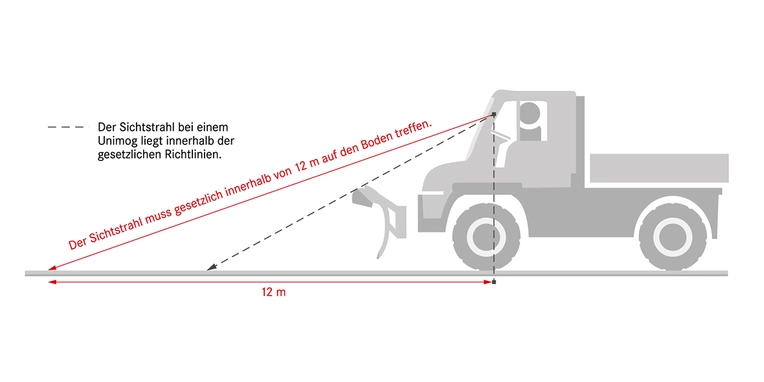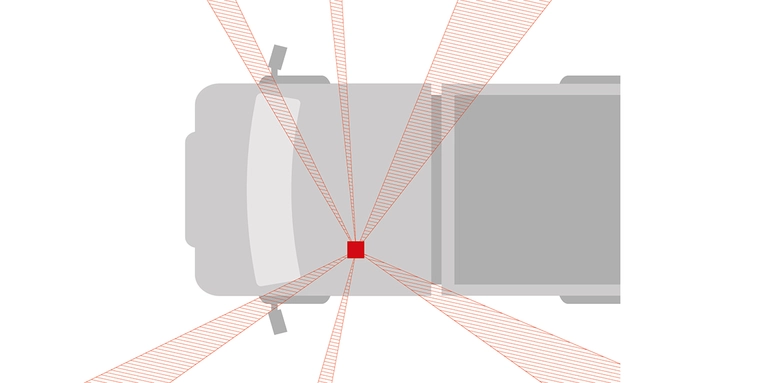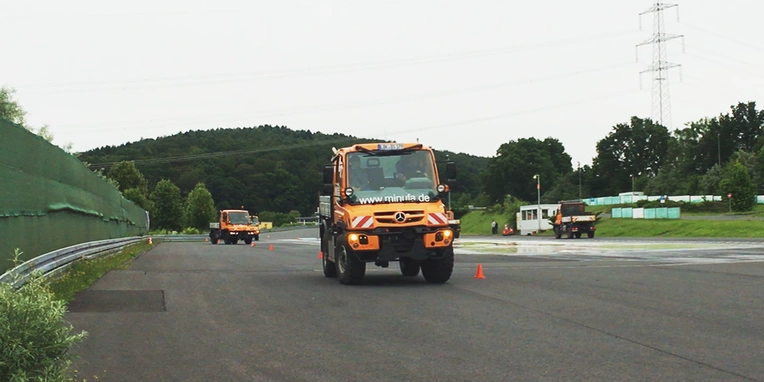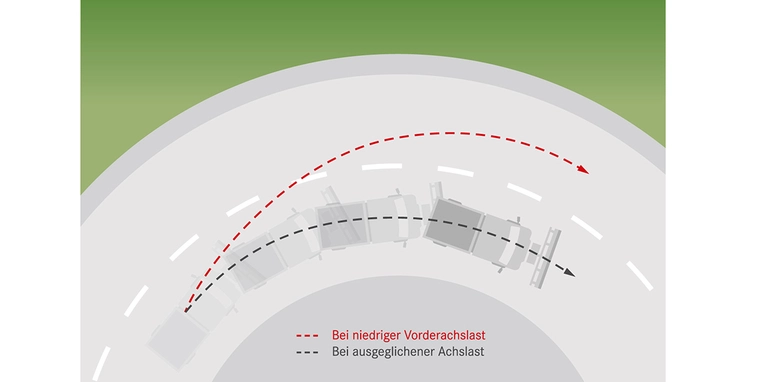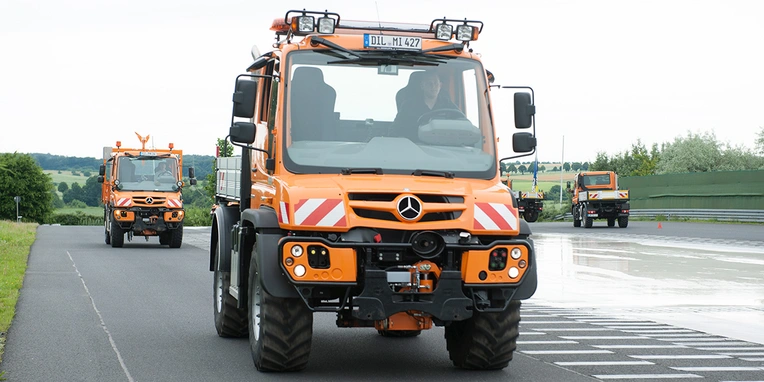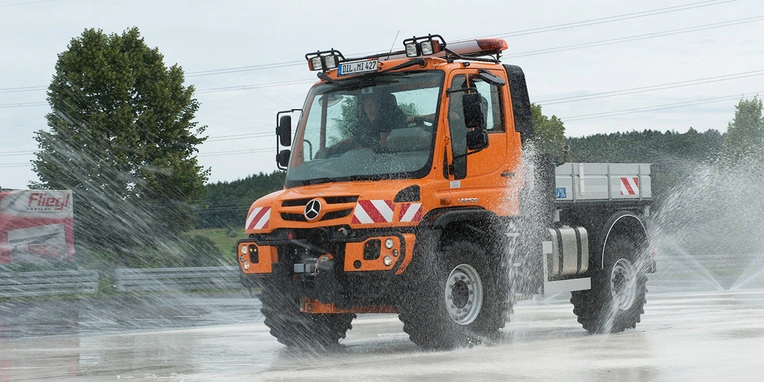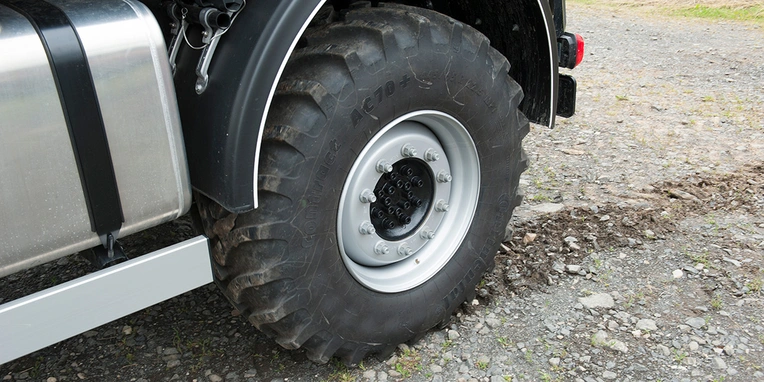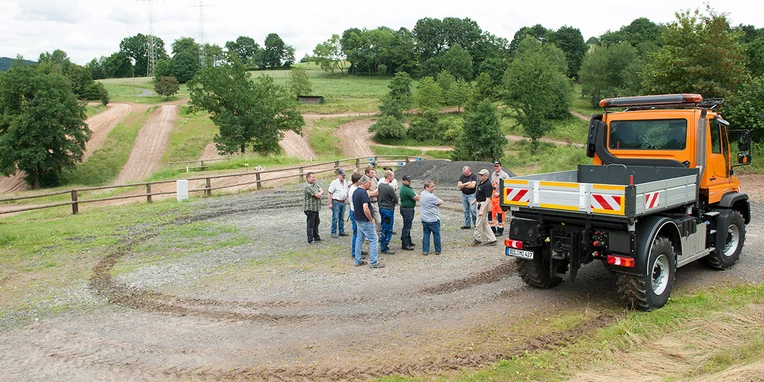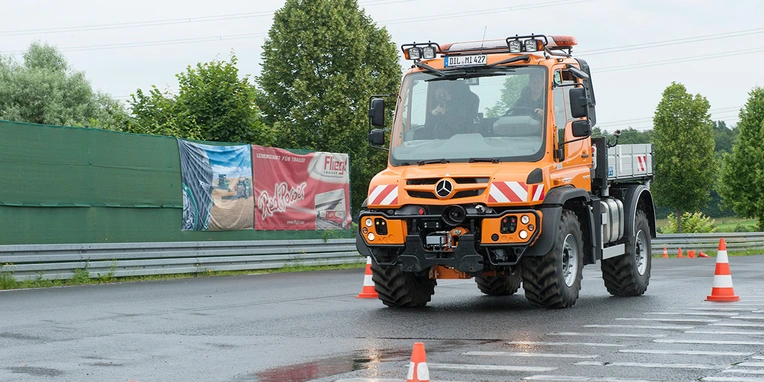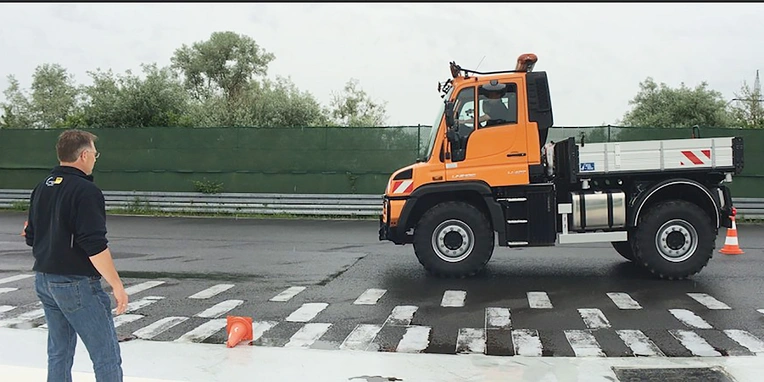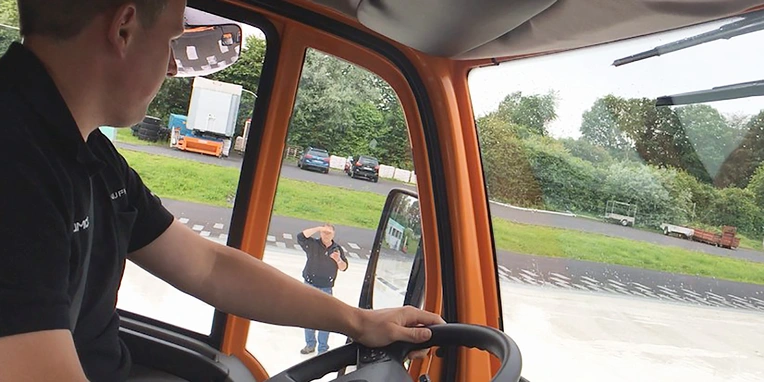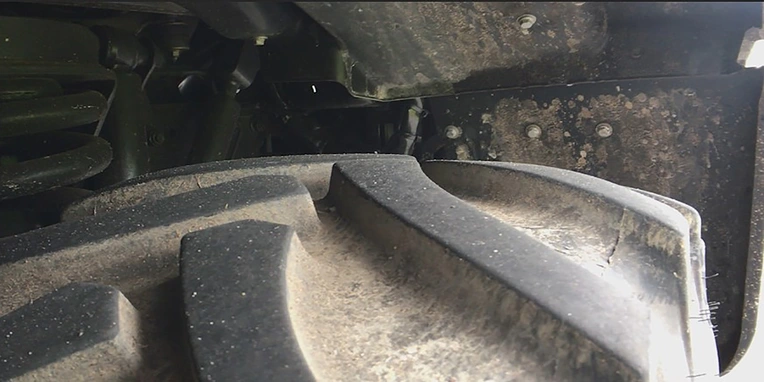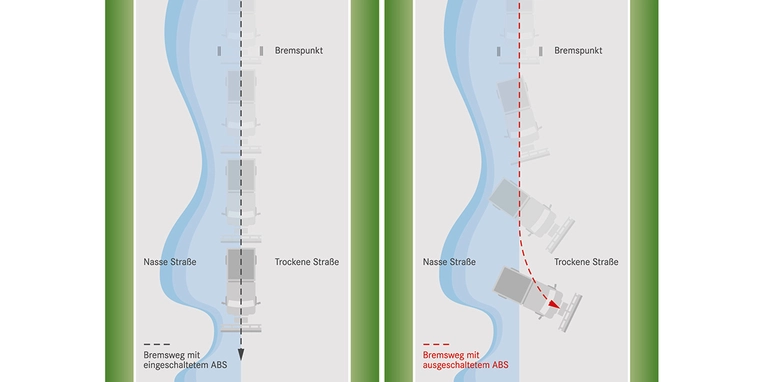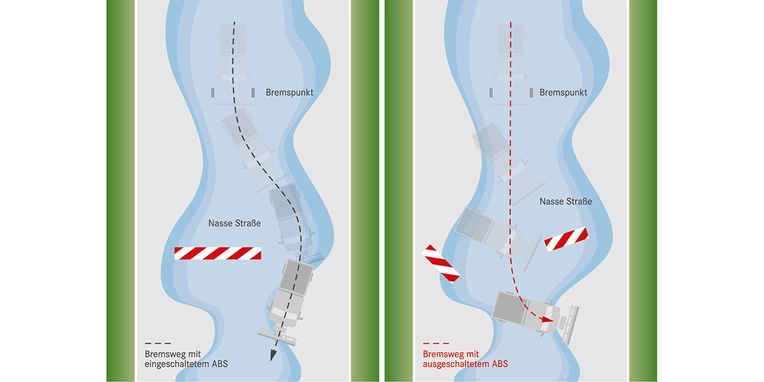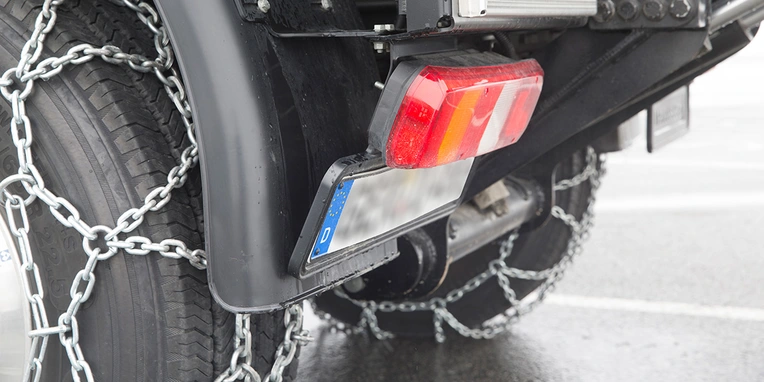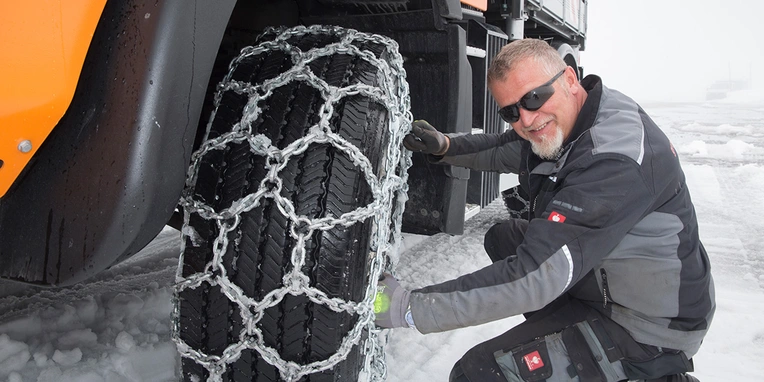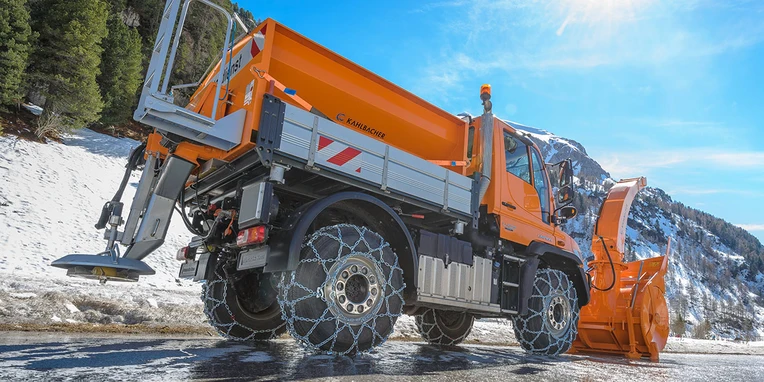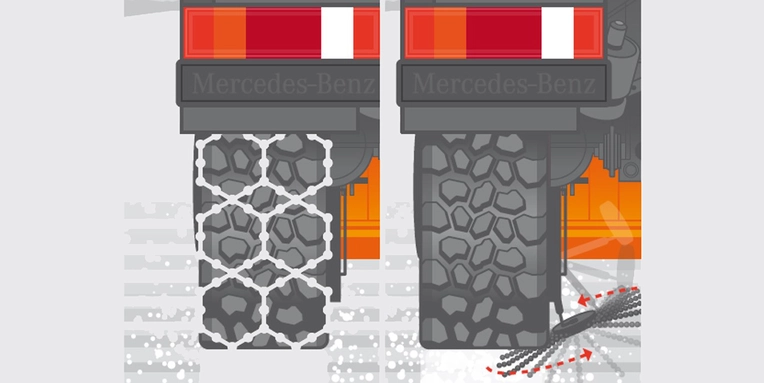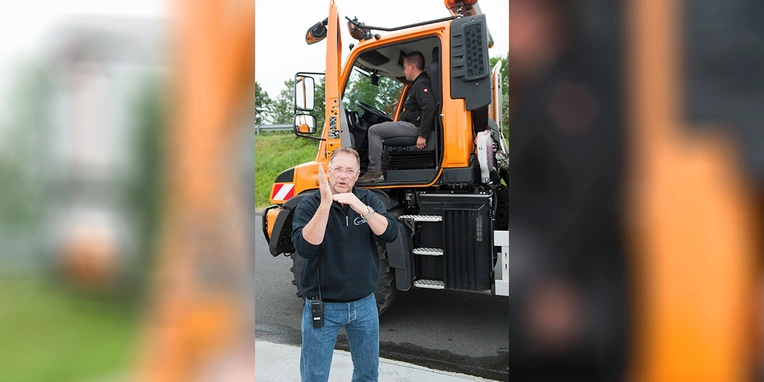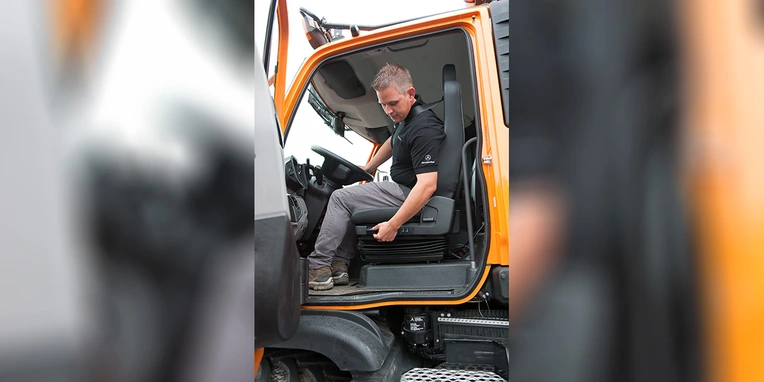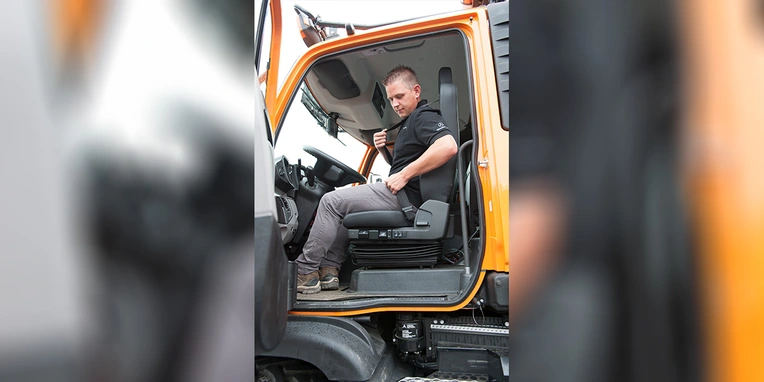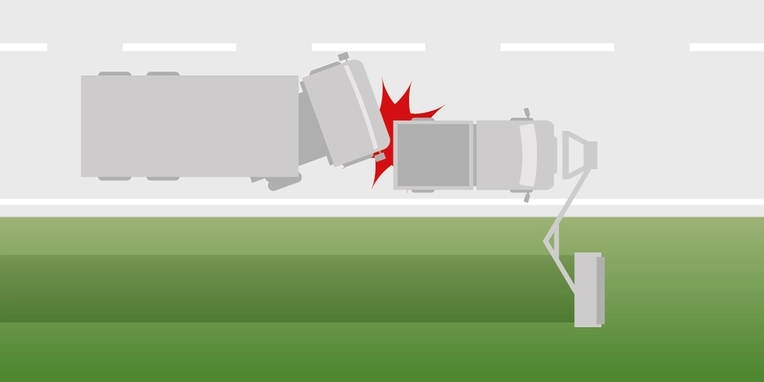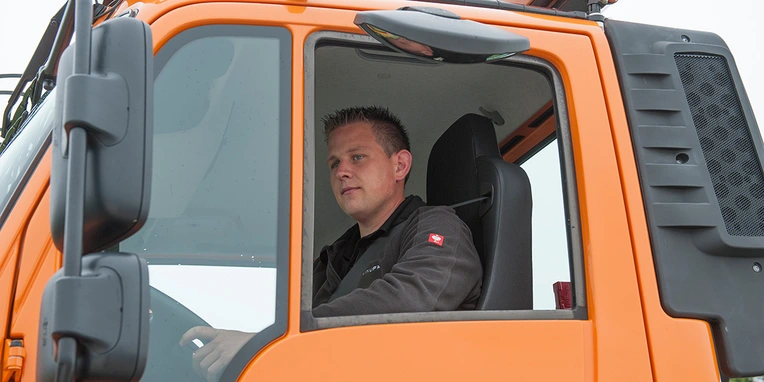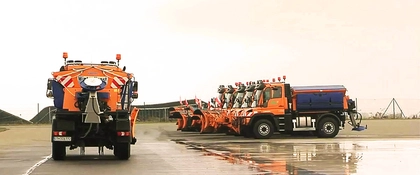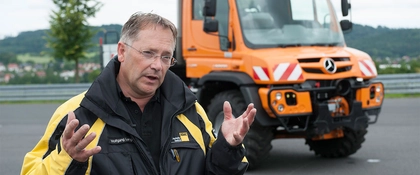Unimog: outstanding safety properties.
Choosing a Unimog always means choosing more safety. For municipal operation and in agriculture, protection of the occupants and of people in the direct vicinity of the vehicle is the highest priority. In this respect the Unimog can distinguish itself from other vehicle concepts and prove that as an all-rounder it is prepared for any challenge.
Test results focus on safety.
A tractor test conducted by the French magazine Entraid makes it clear how indispensable a safe vehicle is for everyday work: in the magazine’s test, a head-on collision of a tractor against the pillar of a bridge was simulated – 160 hp, 30 km/h. The result was horrifying: without a seat belt the driver dies from injuries incurred in the impact. With a fastened 2-point seat belt the injuries are not fatal but nevertheless serious.
The Unimog with its short front-end dimension, a wide field of vision, controlled braking behaviour, directional stability, easy use of snow chains, impact safety and high vibration damping offers a reliable overall package that provides safety for the driver and other road users where risks and dangers can arise. ADAC driving safety expert Wolfgang Lange calls the Unimog a "very safe, well-engineered vehicle".
Short front-end dimension.
Legal requirements.
The front-end dimension is the distance between the front edge of the mounted implement and the middle of the steering wheel. In the procedural documentation for mounted implements from the German Federal Ministry for Transport, Building and Urban Development, a maximum front-end dimension of 3.50 m is legally prescribed. In combination with the majority of the mounted implements, the Unimog clearly falls below this upper limit.
A closer look: more safety for the driver.
Particularly in tight spaces, the short front-end dimension of the Unimog is a decisive factor for ensuring a greater level of safety. If the implement carrier is equipped with a snowplough or another implement and the vehicle approaches a tight junction, the driver must be able to see vehicles approaching from the side in good time. Because the earlier a driver sees what is coming, the better he/she can react. The seating position of the driver in the Unimog, as well as the low distance to the front edge of mounted implements have a positive effect on visibility – which means greater safety for the Unimog driver and all other road users.
